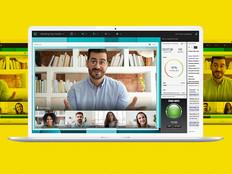Tech that Provides Flexibility Can Drive Up College Completion
While nearly 90 percent of recent high school graduates enroll in college, only 61 percent of first-time full-time students who pursue a bachelor’s degree actually complete it within eight years, according to a report from the American Academy of Arts and Sciences and Moody’s Analytics.
“The Economic Impact of Increasing College Completion” also found that if college completion — and the investments by higher education institutions to boost this completion — increased, over time it would drive up economic growth for the nation.
“In a world in which the focus is often on short-term results, investing in college completion offers a long-term outcome well worth considering,” said AAAS president Jonathan Fanton in an eCampus News article.
Universities are regularly using data analytics tools to innovate advising practices and boost college completion rates. The eCampus News article cites Georgia State University’s use of data analytics to improve student retention as an investment other universities could make to improve completion.
Using data analytics, however, is only one of the ways technologies can support college completion.
SIGN UP: Get more news from the EdTech newsletter in your inbox every two weeks!
Investing in Mobile Devices and Flexibility Could Pay Off
With big numbers of students using smartphones and tablets, colleges could offer support that could boost completion rates through an app or another mobile tool.
In a recent survey from Ellucian, 85 percent of students indicated that a mobile app from their university would have helped to ease their transition to college and 73 percent believe it would have helped them become more involved on campus. Part of the success of a first-year college student lies in their involvement on campus, as participation in clubs and other extracurriculars can foster skills to help them thrive academically.
"The main reason for my being in so many clubs was that it taught me discipline while also allowing me to have fun," said Nihar Suthar, an author and recent college graduate, in a blog post on The College of St. Scholastica. "I had to be disciplined to get all my work done so I could participate in clubs and organizations."
Universities could foster academic growth by creating apps for new students that provide information and support campus involvement.
In addition to apps, universities can invest in technology and online courses to increase the flexibility of the learning experience for students. At Weber State University, online courses are a key part of boosting retention.
“We’re trying to raise the six-year graduation rate — online plays a key role in that,” said Bruce Davis, dean of online and continuing education, in an EdTech interview. “It provides flexibility if your need to take an extra course a semester to speed your time to completion. It’s an important tool in our bigger institutional strategy.”
Overall, McGraw-Hill Education’s 2017 Digital Study Trends Survey found students prefer classes that use digital tools like a cloud platform or app that provides them with flexibility in how they do their work.








